Boost Video SEO for Higher Search Visibility
- Home
- Knowledge Sharing
- Boost Video SEO for Higher Search Visibility
Key Takeaways:
- Optimize for Keywords and Search Intent: Focus on popular, relevant search topics and integrate primary keywords into video titles and descriptions for higher ranking potential.
- Enhance Video Quality: Engage viewers with high-quality production, clear audio, and valuable content to improve user retention and ranking.
- Use Custom Thumbnails and Time Stamps: Eye-catching thumbnails and timestamp navigation boost click-through rates and enhance user experience.
- Implement Schema Markup: Increase visibility in search results with structured data like VideoObject schema, helping videos stand out with rich snippets.
- Embed Videos on Relevant Pages: Embedding videos on strategic web pages improves both page and video SEO, driving traffic to your site.
Video content has become one of the most powerful tools for capturing an audience's attention. However, more than simply creating a video is needed to guarantee visibility. This is where Video SEO (Search Engine Optimization) comes into play. Much like traditional SEO, Video SEO focuses on optimizing your videos to rank higher in search engine results, making it easier for your target audience to discover your content. By using the proper techniques, video SEO can drastically enhance your online presence, drive more traffic to your website, and ensure that your videos reach a wider audience.
What Is Video SEO?
Video SEO, or Video Search Engine Optimization, involves optimizing your video content to ensure it ranks highly on search engine results pages (SERPs) like Google, YouTube, and Bing. The goal is to enhance the visibility of your videos, making them more discoverable to a broader audience when they search for relevant topics. By employing video SEO techniques, you can boost your chances of attracting more viewers, increasing video views, and driving traffic to your website, if you have one. This process involves optimizing elements like video titles, descriptions, tags, and even the content around the video so it stands out among competitors. While SEO strategies evolve, mastering video SEO can significantly increase views, subscribers, and brand exposure, making it an essential aspect of any digital marketing strategy.
"The play button is the most compelling call-to-action on the web." — Michael Litt, Co-Founder and CEO at Vidyard.
Let's look at the most effective video optimization strategies for SEO rankings
Video SEO is a powerful tool for increasing the visibility and reach of your video content. Ranking your videos higher on search engines can drive significant traffic and engagement, but achieving this requires implementing the right optimization techniques. Here are 9 detailed Video SEO tips to help your videos rank higher and perform better:
Create Videos Around Popular Search Topics
The first step to ranking your videos is ensuring that you’re creating content people are actively searching for. If your video doesn’t address a relevant, trending topic, even a high-ranking position won’t guarantee views. Use keyword research tools like SEMrush’s Keyword Magic Tool to identify what your audience is looking for. If your video doesn’t address a relevant, trending topic, even a high-ranking position won’t guarantee views. Use keyword research tools like SEMrush’s Keyword Magic Tool to identify what your audience is looking for.
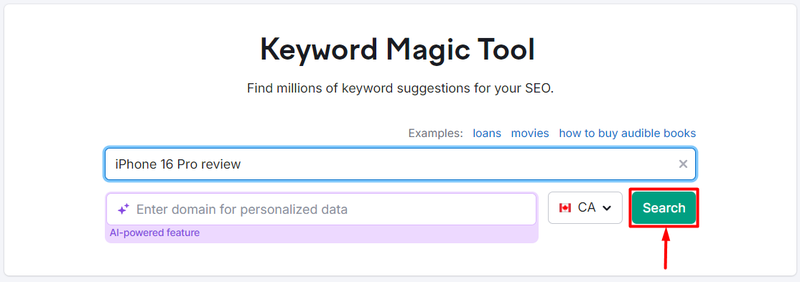
Start with broad keywords related to your niche, such as "review" or "tutorial,"
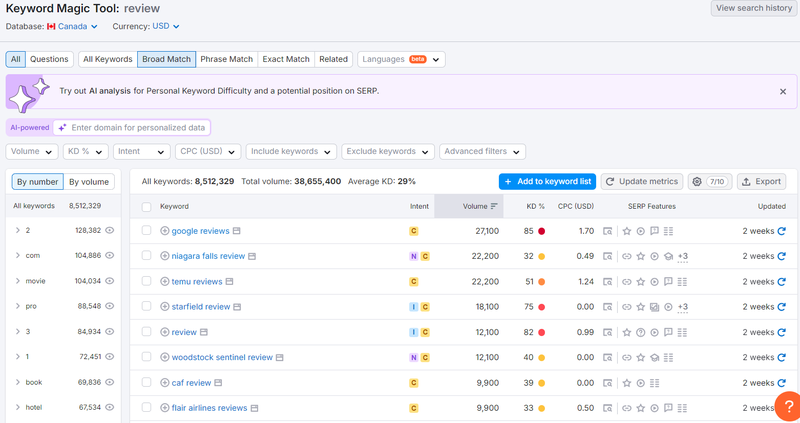
and narrow down your search by filtering for brand-specific terms, like "iPhone 16 Pro review."
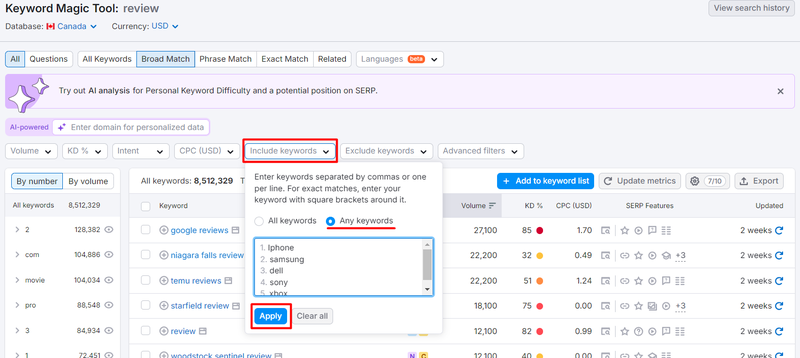
Look for keywords with clear video intent , where Google displays a “Videos” section in its search results.
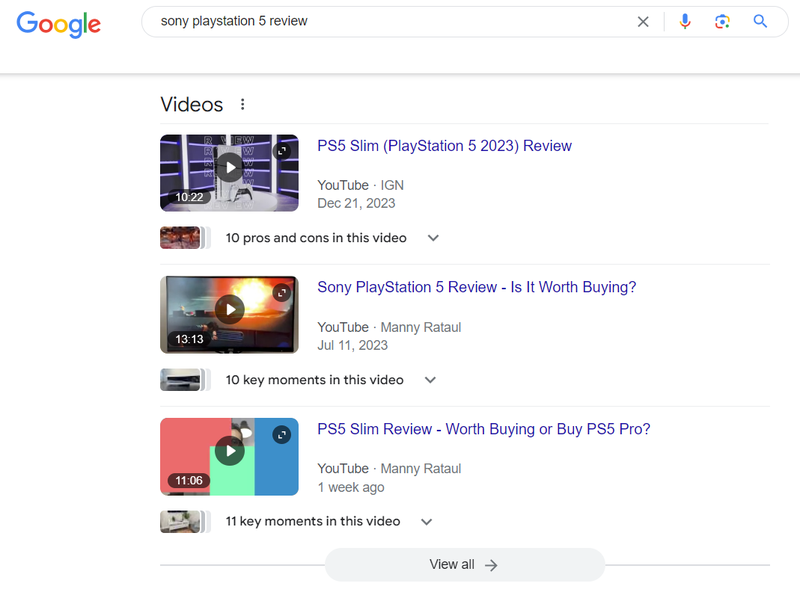
Only topics with video intent will have a good chance of appearing in search engine rankings.
Produce High-Quality Videos
Google prioritizes content that offers value, and the same principle applies to videos. A high-quality video engages viewers from the first few seconds and provides value throughout. Whether you’re reviewing a product, offering a tutorial, or providing entertainment, your video should educate, inspire, or solve a problem for your audience. Focus on key production elements like good lighting, clear audio, and smooth editing to enhance the viewer experience. In niches like tech reviews or fitness tutorials, presenting in-depth, accurate information is crucial to retaining viewer attention and encouraging longer watch times, which can positively impact your video's ranking.
"Video informs and entertains people, and today most people prefer to watch a video rather than read a page of text." — Lisa Lubin, Video Marketing Expert.
Optimize Video Titles for Search and Clicks
Your video’s title is one of the most important factors for both search engines and potential viewers. Google uses it to understand your video’s topic, so it’s essential to include your primary keyword naturally.
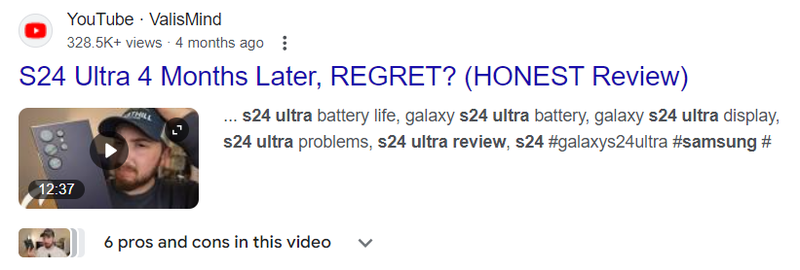
Keep the title under 60 characters to prevent truncation in search results. Crafting compelling titles also increases your video’s click-through rate (CTR). For example, adding numbers or asking questions (e.g., "10 Tips for Boosting Video SEO") can intrigue users and encourage clicks. The higher your CTR, the more likely your video will climb search rankings.
Write Detailed Video Descriptions
A well-written video description serves multiple purposes. It helps search engines understand your content, increases the likelihood of your video appearing for relevant search queries, and entices users to click.
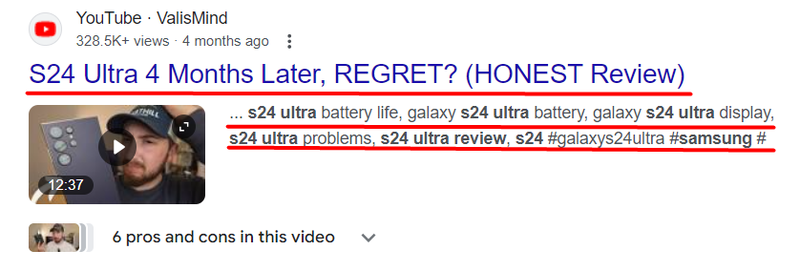
While only a short preview of your description (up to 120 characters) is visible on search results pages, providing a longer, more detailed description can help your video rank for multiple keywords. Start with a strong hook to capture interest, include your primary keyword early on, and give a thorough explanation of what viewers can expect from the video. If your video is hosted on platforms like YouTube, detailed descriptions are even more valuable, as they give search engines more context about your video.
Create Eye-Catching Thumbnails
A custom thumbnail is one of the first things users notice in search results, and having an engaging, relevant image can dramatically boost your video's CTR.

Your thumbnail should visually represent the video’s content and stand out from competing videos. For example, if you're a tech reviewer, close-up shots of the product or a compelling action scene from the video can work well.
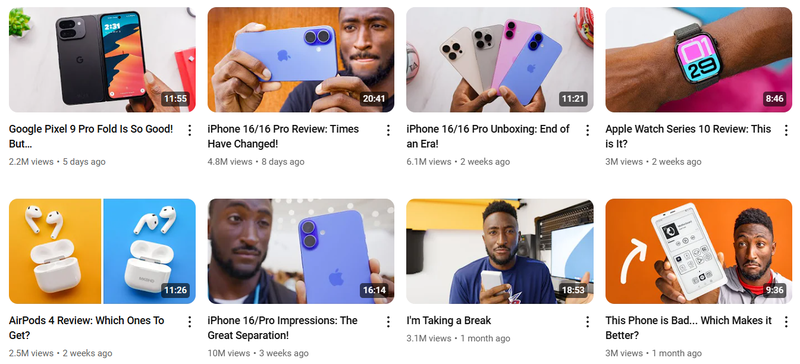
Use high-quality images, bright colors, and minimal text to create an appealing and professional look. You can also analyze what top creators in your niche are doing and incorporate similar strategies to design thumbnails that draw attention.
Use Time Stamps for Better Navigation
Adding time stamps, or “key moments,” to your video provides a better user experience by allowing viewers to jump directly to the parts that interest them the most.
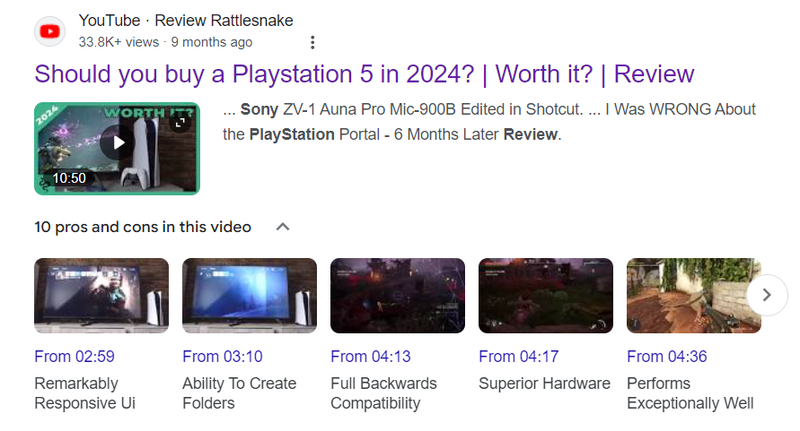
Google often highlights these key moments in search results, giving your video added visibility. To implement time stamps, break your video into clear sections and label them with concise descriptors. For example, if you’re reviewing a product, you could have time stamps for the “Unboxing,” “Performance Review,” and “Final Thoughts.” Make sure the time stamps are in the correct format (MM) and match the video’s flow.
Embed Videos on Relevant Webpages
Embedding your videos into relevant pages on your website not only increases engagement but can also improve SEO. When you embed videos on blog posts or product pages, you create an opportunity for both the webpage and the video to rank in search results. For example, if you’ve created a video review of a product, embedding it into a detailed review page can help both the video and the page rank for relevant queries. This practice ensures that your website gets more traffic, as users are drawn to watch the embedded video without leaving your site for YouTube or other platforms.
Implement Schema Markup
Using schema markup, such as the VideoObject schema, can help search engines understand your video content better and display it more prominently in search results. Schema markup is a code added to the HTML of the page where your video is embedded. It provides detailed information to search engines, such as the video’s title, description, thumbnail URL, and upload date. The sample code for that looks like this:
<script type="application/ld+json">
{
"@context": "https://schema.org/",
"@type": "VideoObject",
"name": "Name of the video",
"description": "This is the description of the video",
"thumbnailUrl": "https://example.com/thumbnail.png",
"uploadDate": "2024-01-13",
"duration": "PT1M54S",
}
</script>
By implementing schema, you increase the chances of appearing as a rich result, where Google shows extra information like video duration and thumbnail. This extra visibility can improve your video’s CTR and, subsequently, its ranking.
Build Backlinks to Your Video Pages
Backlinks—links from other websites to yours—are a critical ranking factor for search engines. Building links to pages where your videos are embedded can improve both the page and the video’s ranking potential. To build backlinks, reach out to websites in your industry and offer to share your video content as a valuable resource. Highlight the unique value your video offers, whether it’s a fresh perspective on a topic or exclusive information not available elsewhere. The more high-quality backlinks you can earn, the better your video will rank.
Upload a Transcript
Including a transcript with your video offers multiple advantages, particularly for SEO. It provides an opportunity to integrate your targeted keywords naturally, which improves the chances of your video ranking higher in search results.
In addition to enhancing SEO, transcripts make your video more accessible to a broader audience. For instance, those who are hard of hearing or people who prefer to watch videos without sound can still engage with your content through the transcript.
Here are some key considerations when creating effective transcripts for video SEO:
- If your video includes multiple speakers, make sure to indicate when each speaker begins talking for clarity.
- Don’t forget to include any important sound effects, such as laughter or applause, as these contribute to the overall context of the video.
- While platforms like YouTube automatically generate captions, these are often inaccurate. For better quality, it’s advisable to create and upload your own transcript.
Types of Videos for Better Conversions
To optimize video SEO and drive conversions, you need to choose the right types of videos for your strategy. Different videos serve different purposes, so it’s important to align your video type with your marketing goals. Below are some effective video formats and tips on how to use them to boost conversions.
1. Video SEO on a Landing Page
Landing pages are often the first point of contact between a user and your brand. With only seconds to capture their attention, embedding a video can be a game-changer. A well-placed video helps quickly communicate your unique value proposition and can significantly boost conversion rates. According to HubSpot , videos on landing pages have the highest likelihood of positively impacting conversion rates.
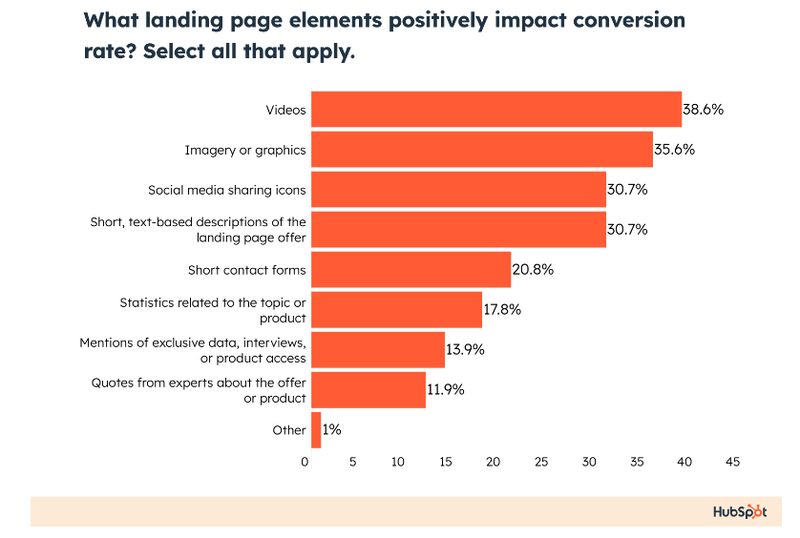
2. Product Videos for SEO
Product videos are one of the most effective ways for e-commerce businesses to increase conversion rates.
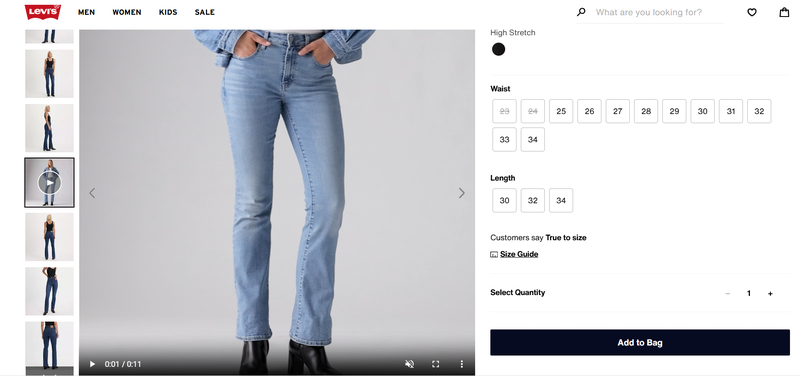
Many retailers now use videos to provide a visual demonstration of their products. In fact, according to Social Media Today (2024), 93% of consumers say videos are helpful when deciding on a purchase. For example, brands like Levi's use product videos on platforms like Amazon to capture attention and improve conversion rates—Amazon pages with videos convert 800% better than those without.
3. Explainer or Introductory Videos
For service-based businesses, explainer or introductory videos can clarify your offerings and help turn viewers into customers. These videos serve as a concise "elevator pitch" for your business. A classic example is the early explainer video created by Dropbox founder Drew Houston, which led to a 10% increase in sign-ups and helped the company secure $48 million in funding.
Boost SEO with Rich Snippets
Rich snippets, or featured snippets, are specialized search results that provide additional details like thumbnails or key moments from your video. These can significantly increase organic traffic by capturing up to 35% of clicks, according to EngineScout.
To optimize your video for rich snippets, embed the video as the primary content on a dedicated webpage. Jane Javor, SEO Manager at NP Digital, recommends ensuring that the text on the webpage closely matches the video content and adding structured data (VideoObject schema) to help Google better understand the context and rank the video accordingly. While Google’s future AI integration may impact how rich snippets are displayed, providing high-quality, well-structured content will always benefit both users and search engines.
FAQs
How can I measure the success of my video SEO strategy?
Track the following metrics to gauge your performance:
- Keyword rankings in search engines and social platforms.
- Click-through rate (CTR) of video thumbnails.
- Conversion rates linked to your video.
- Engagement metrics such as likes, shares, and comments.
- Backlinks from other sites that reference or embed your video.
What’s the best video format for SEO?
MP4 is a preferred format for video SEO as it provides high quality with a small file size, ensuring quick loading times without compromising visual quality.
How can I make my videos stand out in search engines?
Here’s a quick summary to enhance your video SEO:
- Clearly define your goals before creating your video.
- Focus on providing value for your target audience.
- Choose the best hosting platform for your objectives.
- Conduct keyword research and optimize your video accordingly.
- Design an eye-catching thumbnail to improve CTR.
- Provide a comprehensive video description and transcript.
- Include a clear call to action to encourage engagement.
Conclusion
In the past, creating high-quality videos required expensive equipment and software. But today, you can shoot professional videos using just your smartphone. Video SEO is a vital component if you want potential customers to find your videos. The demand for video content is only growing, and viewers will continue to seek out and enjoy engaging, informative videos well into the future.
As you create your video content, remember that quality is crucial. Just as you wouldn’t rush a landing page or blog post, don’t rush your video production. Take the time to create something that looks great and adds value to your audience. By doing so, you'll improve your chances of ranking high in search engine results and grow your audience.



